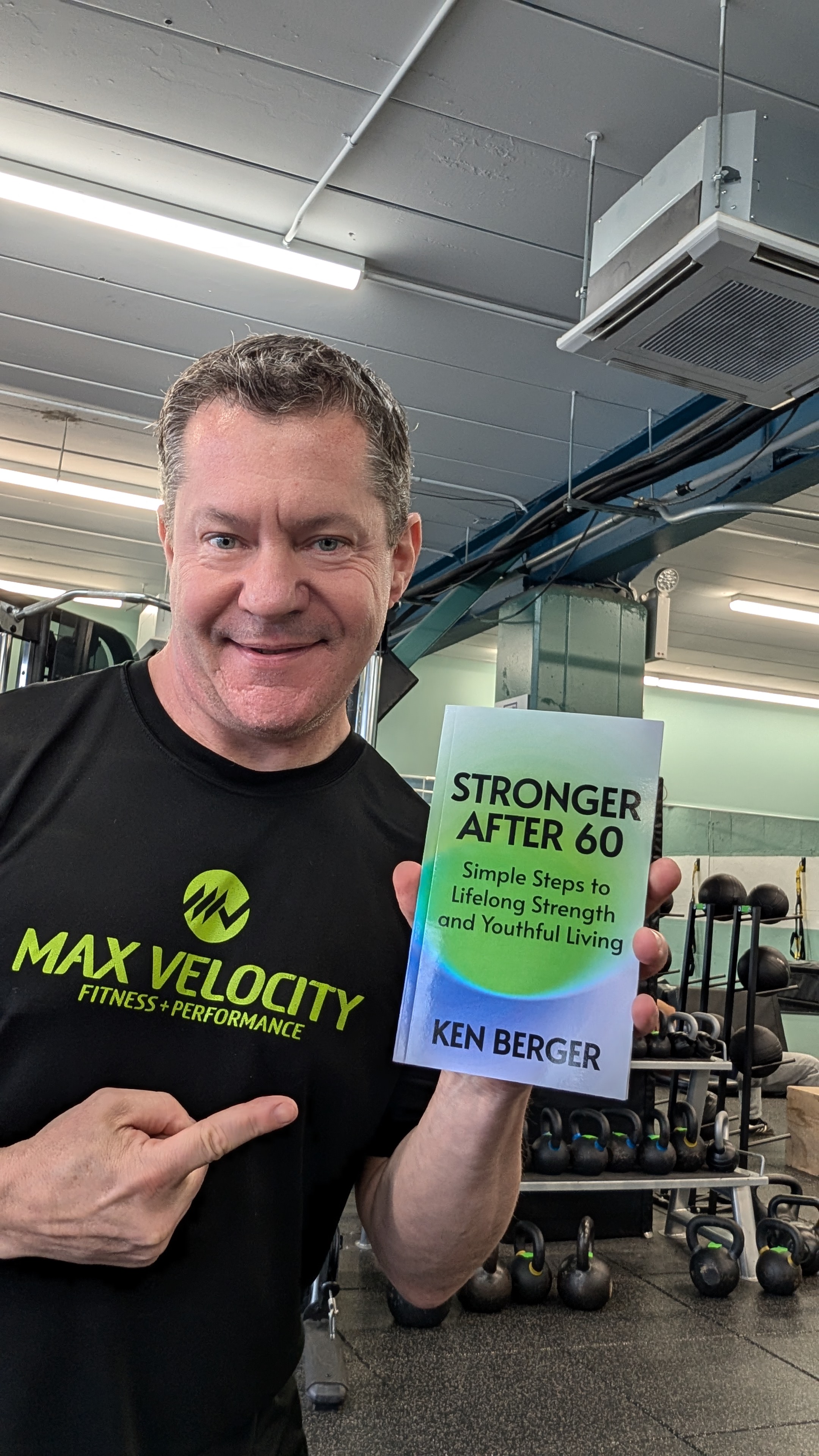

Best exercise for over 60: Yoga vs. strength training
By Ken Berger
As a loyal reader of this blog, you’re well aware of how important it is to maintain your health and vitality as you age. And the research says that the best way to slow the aging process is to exercise.
But what kind of exercise? There are so many choices out there that it’s very easy for people over 60 to get confused about what form of exercise is best for them.
Today we’re going to compare two of the most popular forms of exercise for people over 60: strength training and yoga.
Both have their unique benefits for individuals over 60 looking to slow the aging process. Let's explore the benefits of each and discover which one is the superior form of exercise for people over 60.
Yoga: A Blend of Physical and Mental Benefits

1. Flexibility and Mobility: Yoga is renowned for its ability to increase flexibility and mobility. Through various poses, individuals can enhance their range of motion, which is crucial for maintaining daily activities as we age.
2. Balance and Stability: Regular yoga practice improves balance and stability, reducing the risk of falls, a common concern for older adults.
3. Stress Reduction: Yoga incorporates breathing exercises and meditation, which can help lower stress levels and promote a sense of calm.
4. Improved Mental Health: Engaging in yoga can lead to better mental health outcomes, including reduced symptoms of depression and anxiety.
5. Muscle Tone: While not as effective as strength training for building muscle mass, yoga can still help maintain muscle tone through bodyweight exercises and poses.
Strength Training: Building a Stronger Foundation

1. Increased Muscle Mass: Strength training is more effective than yoga in building muscle mass, which is crucial for maintaining metabolism and preventing sarcopenia, the age-related loss of muscle mass.
2. Bone Health: Lifting weights can improve bone density and reduce the risk of osteoporosis, a significant concern for people over 60.
3. Functional Strength: Strength training enhances functional strength, making everyday tasks easier and reducing the risk of injury.
4. Metabolic Benefits: Incorporating strength training into your routine can help manage weight and prevent obesity, which is linked to numerous health issues.
5. Improved Cognitive Function: Recent studies suggest that strength training can have a positive impact on cognitive function, helping to stave off cognitive decline.
And the Winner Is … Strength Training!
While yoga offers a holistic approach to health, combining physical postures with mental and spiritual elements, strength training provides tangible benefits that are particularly relevant for aging bodies. The increase in muscle mass and bone density offered by strength training is crucial for preventing sarcopenia and osteoporosis, common issues that can significantly impact quality of life as we age.
The functional strength gained through weightlifting translates directly into an improved ability to perform daily activities, from carrying groceries to climbing stairs, which helps maintain independence. The metabolic benefits of strength training, including weight management and improved cognitive function, are also key factors in healthy aging.
Both yoga and strength training offer valuable benefits for people over 60 looking to maintain their health and vitality. The benefits of strength training — increased muscle mass, bone density, functional strength and metabolic health, not to mention improved memory and cognitive function — make it a superior choice for slowing the aging process.
Of course, exercise for people over 60 isn’t an all-or-nothing endeavor. When my nutrition coaching clients ask, “Should I have animal protein or plant-based protein,” do you know what I say?
“Both, of course!”
So there’s absolutely nothing wrong with incorporating yoga, stretching, and other mindfulness practices into your fitness routine. As long as strength training is the anchor and the other modalities are complementary.
When it comes to exercise for people over 60, I like to think of the training regimen as a meal.
Strength training is the protein. Every meal must have protein.
Flexibility-focused activities like yoga are the fruits and vegetables. It’s not a complete meal without fruits and veggies, either.
Ultimately, the best approach is one that’s anchored by strength training and includes complementary activities to improve flexibility, mobility and balance.
–
If you’re over 60 or approaching it and find yourself disappointed with the exercise options available to you, we should schedule a quick 10-minute phone chat. I’ll go over the details of my new “Stronger After 60” program and answer all the questions you have.
You’ll come away with a simple plan you can start implementing right away to age more powerfully and live a life you love.
If you’d be interested, you can schedule your free, no-strings-attached phone chat here.
Want To Learn More First? Download A FREE Copy Of My Best-Selling Book ... Stronger After 60!
My new best-selling book, Stronger After 60, is your ultimate guide to optimal health, fitness and longevity through the power of science and healthy habits.
Stronger After 60 will change the way you think about aging. This book is designed for real people who want simple solutions to maintain their strength and youthful energy while enjoying the best things in life without restriction. It’s your roadmap to longevity, wellness and enjoying your 60s and beyond like someone half your age.

And TODAY, You Can Get Your Very Own Copy of Stronger After 60 ... for FREE!
Just click the button below, fill out your info, and a copy of Stronger After 60
will be on its way to your inbox in seconds!
Don't miss out on this life-changing opportunity. Get your FREE copy of Stronger After 60 NOW.




